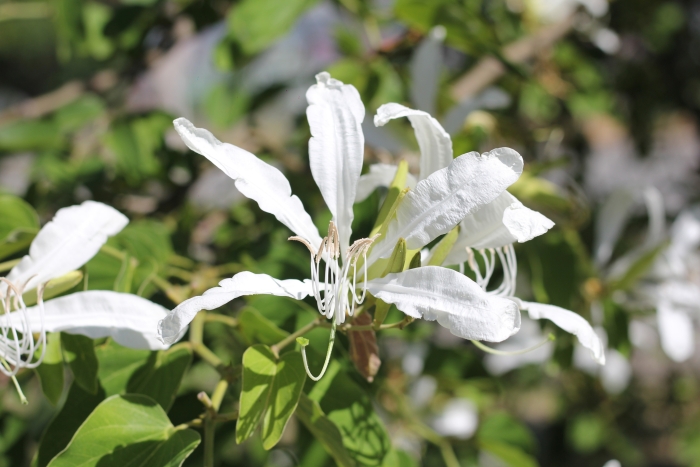Brazilian Orchid Tree
(Bauhinia forficata)
Brazilian Orchid Tree (Bauhinia forficata)
/
/

Romi Galeota Lencina
CC BY 4.0
Image By:
Romi Galeota Lencina
Recorded By:
Copyright:
CC BY 4.0
Copyright Notice:
Photo by: Romi Galeota Lencina | License Type: CC BY 4.0 | License URL: http://creativecommons.org/licenses/by/4.0/ | Rights Holder: Romi Galeota Lencina | Publisher: iNaturalist | Date Created: 2020-12-31T10:04:23-08:00 |





























Estimated Native Range
Summary
Bauhinia forficata, commonly known as Brazilian Orchid Tree, is a deciduous or semi-deciduous tree native to the Atlantic Forest biome of South America, particularly in Brazil, Argentina, and Paraguay. It typically grows to a height of 5-35 feet (1.5-10.7 meters) and a width of 25-35 feet (8-11 meters). The Brazilian Orchid Tree has a distinctive appearance with two-lobed, butterfly-shaped leaves and showy, fragrant flowers that are cream and white, resembling orchids. The flowering season extends through spring and summer, and the flowers are highly attractive to pollinators.
The Brazilian Orchid Tree is valued for its ornamental flowers and is used in cultivation for urban planting, as a street tree, and in gardens for its aesthetic appeal. It is relatively easy to maintain and can adapt to a range of soil types, though it prefers well-drained soils. It requires full sun to part shade and moderate watering. While it is not known for major disease problems, it can be susceptible to root rot in poorly drained soils. This species is not typically invasive outside its native range but should be monitored to ensure it does not become a problem.CC BY-SA 4.0
The Brazilian Orchid Tree is valued for its ornamental flowers and is used in cultivation for urban planting, as a street tree, and in gardens for its aesthetic appeal. It is relatively easy to maintain and can adapt to a range of soil types, though it prefers well-drained soils. It requires full sun to part shade and moderate watering. While it is not known for major disease problems, it can be susceptible to root rot in poorly drained soils. This species is not typically invasive outside its native range but should be monitored to ensure it does not become a problem.CC BY-SA 4.0
Plant Description
- Plant Type: Tree
- Height: 15-35 feet
- Width: 25-35 feet
- Growth Rate: Rapid
- Flower Color: White
- Flowering Season: Spring, Summer
- Leaf Retention: Deciduous
Growth Requirements
- Sun: Full Sun, Part Shade
- Water: Medium
- Drainage: Medium
Common Uses
Bee Garden, Bird Garden, Butterfly Garden, Drought Tolerant, Fragrant, Hummingbird Garden, Low Maintenance, Showy Flowers
Natural Habitat
Native to the Atlantic Forest biome of South America
Other Names
Common Names: Cow’s-Foot , Pata De Vaca , Pezuña De Vaca
Scientific Names: Bauhinia forficata , Bauhinia aculeata , Bauhinia breviloba , Bauhinia brasiliensis , Bauhinia forficata var. longiflora , Bauhinia forficata var. latifolia , Bauhinia longiflora , Pauletia forficata , Bauhinia armata , Bauhinia brasiliensis var. longiflora
GBIF Accepted Name: Bauhinia forficata Link